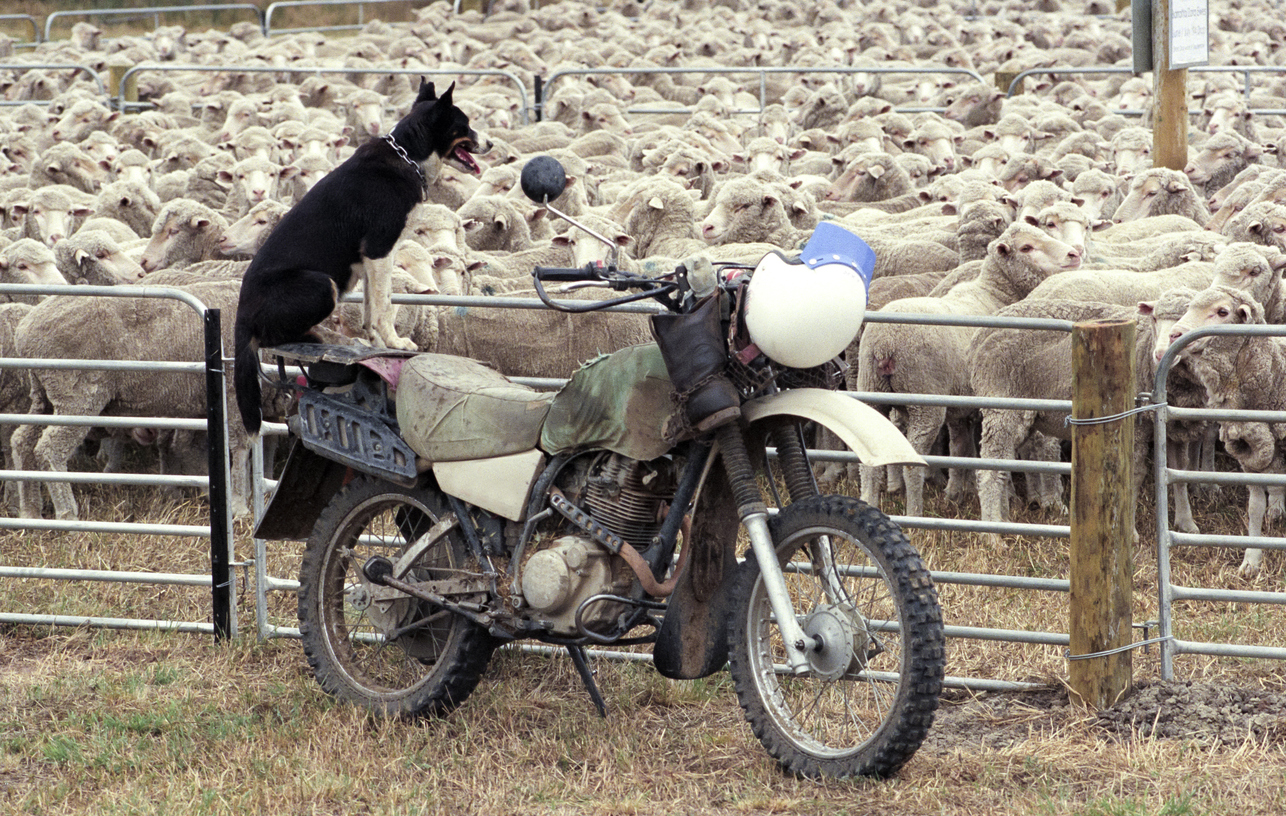My first job in livestock performance recording was with the Genetics Section, as it was called, at Ruakura Research Centre in New Zealand. I worked part time while studying at university, transferring research trial data off the government mainframe on reel-to-reel tape, and writing inbreeding coefficient calculation software.
The genetics section was based in an old converted house, where we sat around at large, wooden, public service desks, surrounded by high stacks of computer printouts, all painstakingly bound and labelled for future use. We were the leading edge of genetic improvement and livestock performance recording.
That was nearly thirty years ago of course, and the face and capability of modern technology has radically changed. Interestingly however, many of the practices in livestock recording industries still reflect that past golden age, and it is only recently that the software tools and databases of – let’s be generous and say – 15 years ago have started to be refreshed.
In this, the first of two articles about technology in livestock breeding, I propose that we could make much more effective use of smart technologies to increase the rate of genetic progress and address commercially important, but hard to measure, animal characteristics. In my next post, I’ll examine how technology could reduce the cost of phenotype collection (I might even explain what a phenotype is), and encourage better use of improved genetics by commercial producers.
Measure what you can’t see
In our traditional performance breeding tools, we focused on things that farmers could readily measure: kilograms and counts. Numbers of live progeny, and kilograms of liveweight, milk, and wool. Good news, most of those production traits are heritable and we’ve made good progress over the last 30+ years.
So how do you measure characteristics that are important in modern farming systems?
- Meat eating quality, so that consumers can repeatably have a great eating experience;
- Feed conversion efficiency, converting inputs into product more efficiently, reducing greenhouse gas emissions per unit of product, and making the farming system more profitable;
- For that matter, greenhouse gas emissions (where this is driven by livestock genetics rather than inoculation by a specific set of gut microorganisms);
- Urine nitrate concentration, and hence one key environmental impact of extensive livestock farming;
- Disease resistance and the response of animals to a variety of disease and parasite challenges;
- Behaviour of animals around people and other livestock, including how they handle stressful environments such as being moved; and
- Longevity, the ability of female animals to raise progeny season after season, reducing the substantial cost of replacement animals.
There are proxies for many of these measures of course. Breeding for growth rates or milk production have arguably improved greenhouse gas efficiency for example, but in some breeding systems a change in mature weight of animals has increased emissions. Progeny tests and laboratory measures have been used in key programmes, but they may not help us with routinely identifying the genetic outliers that will lead the next leap in genetic progress.
New measurement and sensing technologies offer real potential to help with these “hard to measure” areas of animal performance in the coming years. Accelerometer and microphone technologies can identify individual animal eating habits, heats and parturition (birth) dates. 3D and multispectral cameras tell us about carcass and meat product characteristics, and additional characteristics of milk. Increasingly, this data will be collected in-line or in near-real-time, providing a rich stream of data that could be analysed for many purposes.
The next generation of animal recording and genetic analysis systems must be built to handle this variety of real-time, stream data: or at least the results of analysing it.
Fewer errors, more progress
A primary driver of any livestock recording and animal evaluation system is to enable breeders and commercial producers to make better decisions about the animals they use in breeding. Computers don’t select animals: people do. Where a producer chooses an animal because they like the look of its eyes, or its stance, or its colour, and ignores the potential impact of the animal on their herd, the results will be at best random, and often detrimental.
Formal breeding schemes with EBVs and indexes seek to inform better decisions about the breeding merit of animals, but EBVs can be limited by the information available:
- Accuracy of recording parentage and animal relationships;
- Incorrect allocation of records to the wrong animals;
- Transposition and recording errors when capturing data; and
- Failing to account for the impact of environmental effects such as the feeding and management regimes of groups of animals, the age of the mother, or whether an animal was reared as a single or twin.
Technology is playing a substantial role in improving the accuracy of EBVs, notably through genomic DNA analyses resolving the fraught process of parentage recording and contributing substantially more information, earlier in each animals’ life-cycle. Better facilitation and handling of genomic data collection is well overdue in animal recording systems, and I’m pleased to see this being addressed.
In addition to genomics, electronic identification (EID) and automated recording systems can remove many identification and data capture areas, and the ability to feed this data seamlessly into modern evaluation systems without having to manually manipulate data will provide another leap forward.
Recording management groups properly has been a real limiting factor in many breeding programmes, and is one of the key hesitations in extending these to commercial producers. I believe that sensors that identify eating and movement behaviours, and location or proximity to other animals, will help us to automatically and transparently solve the problem of recording management groups and regimes. This will provide another substantial step forward in removing the noise of environmental effects.
Of course, more accurate EBVs is still only a piece of the puzzle. Helping producers to make use of this information effectively is another, and something I’ll address in my next post.
Rezare Systems is a bespoke software design and development company specialising in the agriculture sector. We have special expertise in building livestock recording and management systems, and tools for data collection and integration. Learn how Rezare Systems can assist your business.

